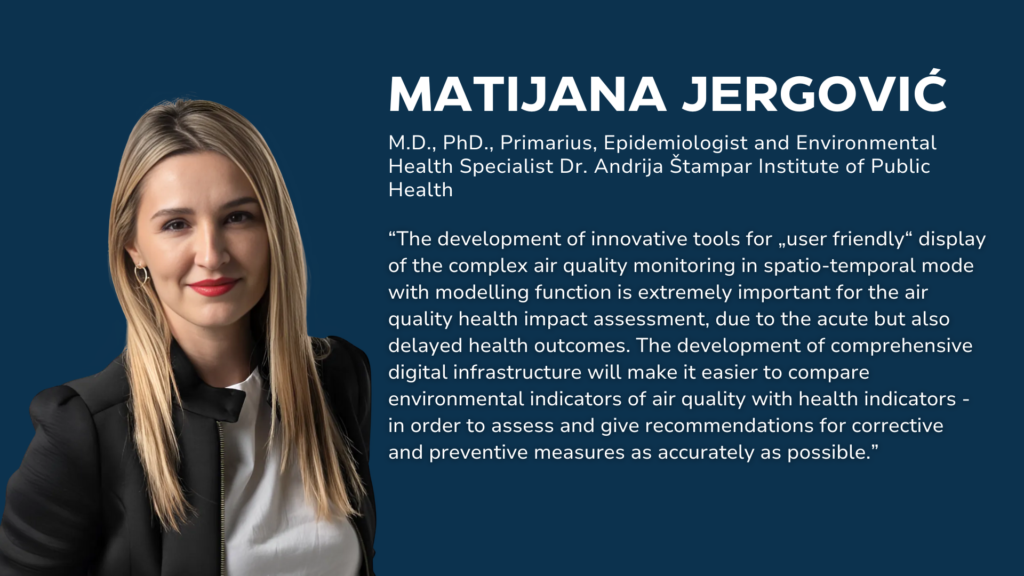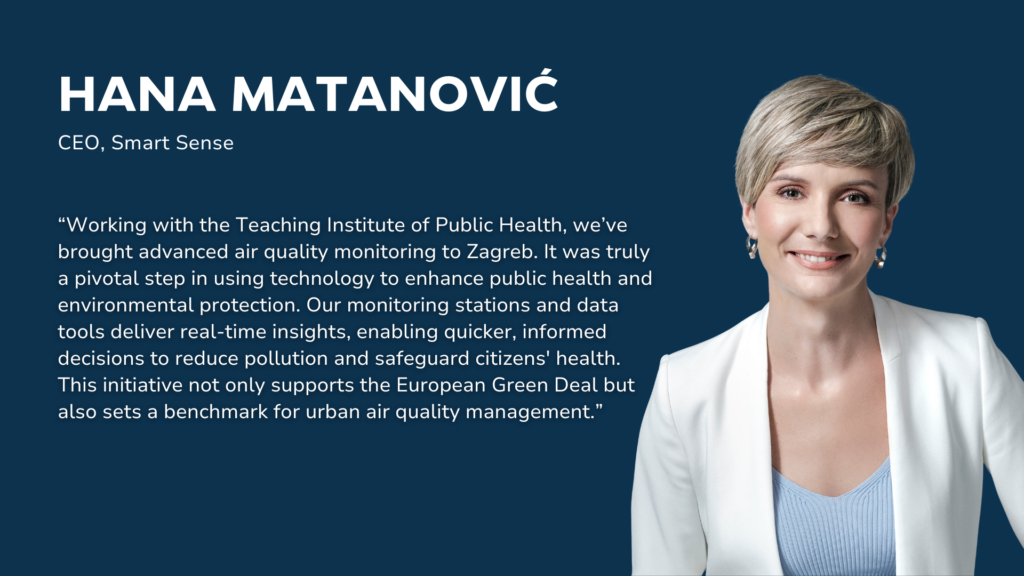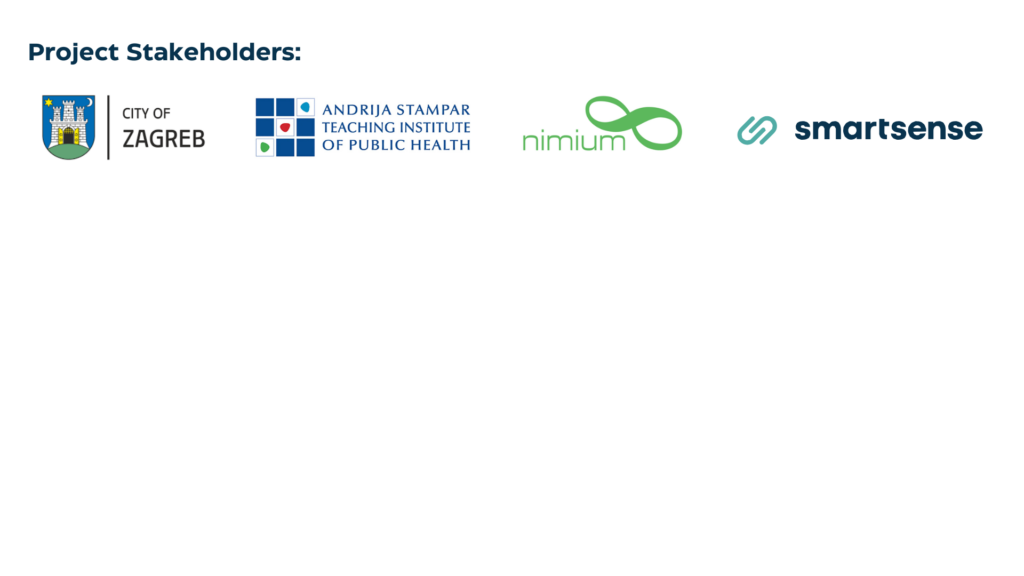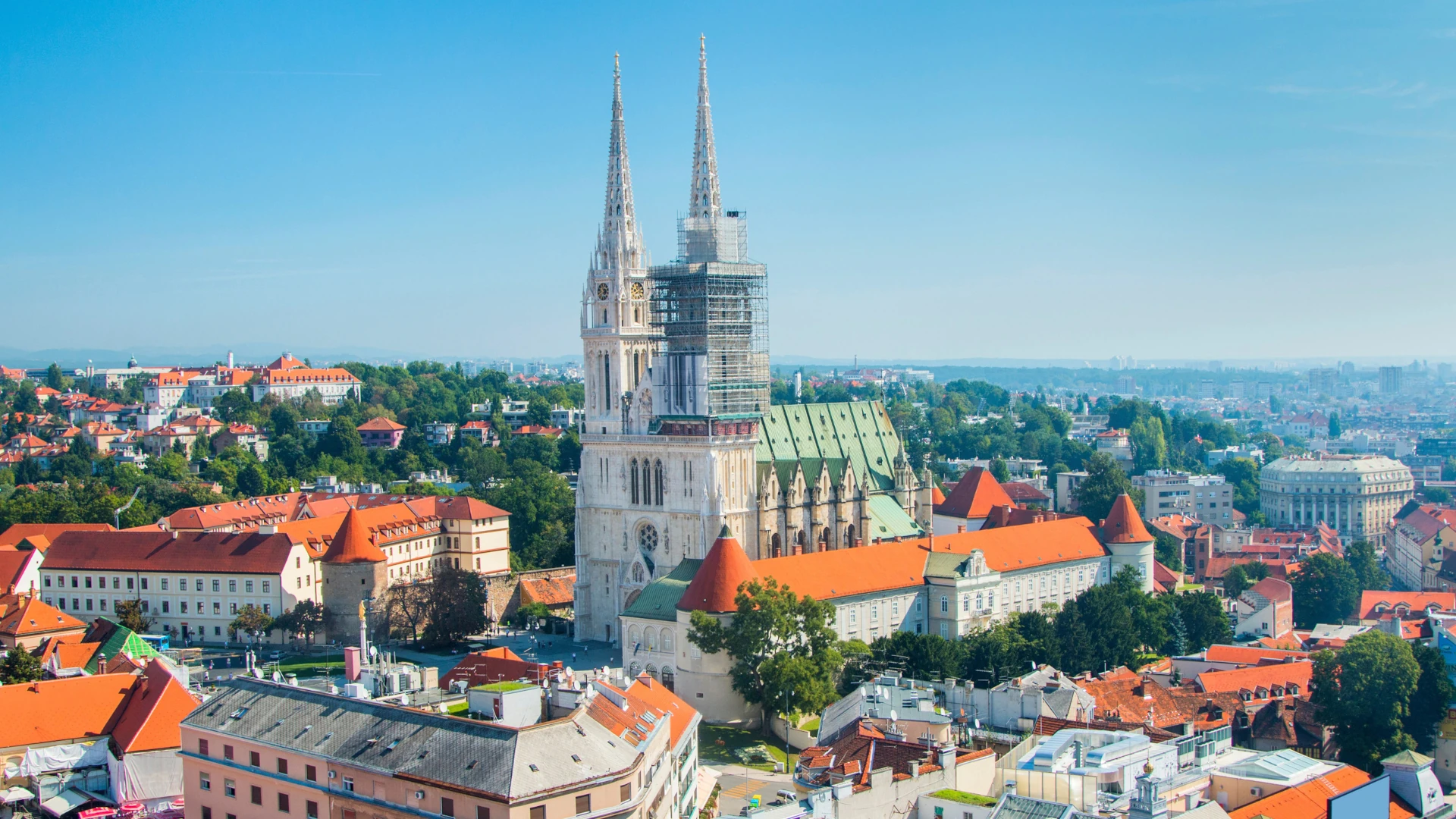To build a healthy planet for all, the European Green Deal calls for the EU to better monitor, report, prevent and remedy air, water, soil and consumer products pollution, among other things.
There is an urgency to act as environmental pollution represents additional significant risk for higher mortality and higher burden of diseases like cancer, ischaemic heart disease, obstructive pulmonary disease, strokes, mental and neurological conditions, diabetes and more.

In line with the European Green Deal’s commitment to a healthier planet, the City of Zagreb took decisive action to tackle urban air pollution. Partnering with Smart Sense, a leading EU-based research and development company specializing in air quality monitoring, the Teaching Institute of Public Health “Dr. Andrija Štampar” initiated an innovative project to monitor and improve air quality across Zagreb.
Project Initiation: A Drive for Improvement
The project was launched by the Teaching Institute of Public Health “Dr. Andrija Štampar” with a vision of enhancing public health and ensuring transparency in environmental data. This initiative aimed to establish a real-time air quality monitoring system across Zagreb, gathering crucial data to aid in urban planning, health risk assessments, and environmental compliance.
Objectives and Goals
The project’s primary objective was to create a comprehensive air pollution monitoring system within Zagreb. Key goals included:
• obtaining data for corrective and preventive actions
• assessing health impacts
• systematizing data
• interpreting values
• reducing citizen inquiries
• and ensuring compliance with strategic national frameworks like Croatia’s Climate Change Adaptation Strategy for 2040 and beyond and ongoing revision process of Ambient Air Quality Directive.
Implementation: Phased Deployment for Comprehensive Coverage
To meet these goals, Smart Sense deployed Sensees Outdoor Air Quality Monitoring Stations throughout Zagreb in three strategic phases:
• Phase 1: Fourteen indicative monitoring stations were installed, and the collected data was made available to the public via an online portal.
• Phase 2: An additional 35 monitoring stations were deployed, expanding coverage and continuing public data transparency.
• Phase 3: An advanced Predictive Air Quality Model was developed, enabling citywide air quality forecasting based on pollution data, meteorological information, satellite imagery, and traffic patterns.
This hybrid network combined both reference and indicative monitoring stations, ensuring high coverage and accuracy while maintaining cost-effectiveness. The Predictive Air Quality Model supports a range of citywide assessments, aiding city officials in identifying pollution sources, understanding patterns, and making data-driven decisions for pollution mitigation.

Results: A Healthier, More Informed Zagreb
With Smart Sense technology in place, the Teaching Institute of Public Health “Dr. Andrija Štampar” can now interpret and relay air quality data to health authorities for preventive measures. Response times to environmental inquiries have significantly improved, and citizens have access to up-to-date, reliable air quality information. The feedback from public health officials, policymakers, and residents has underscored the system’s transparency and effectiveness in delivering actionable insights.
Key successes include enhanced air quality awareness among citizens, more responsive health measures, and strengthened public trust in data-driven decision-making.
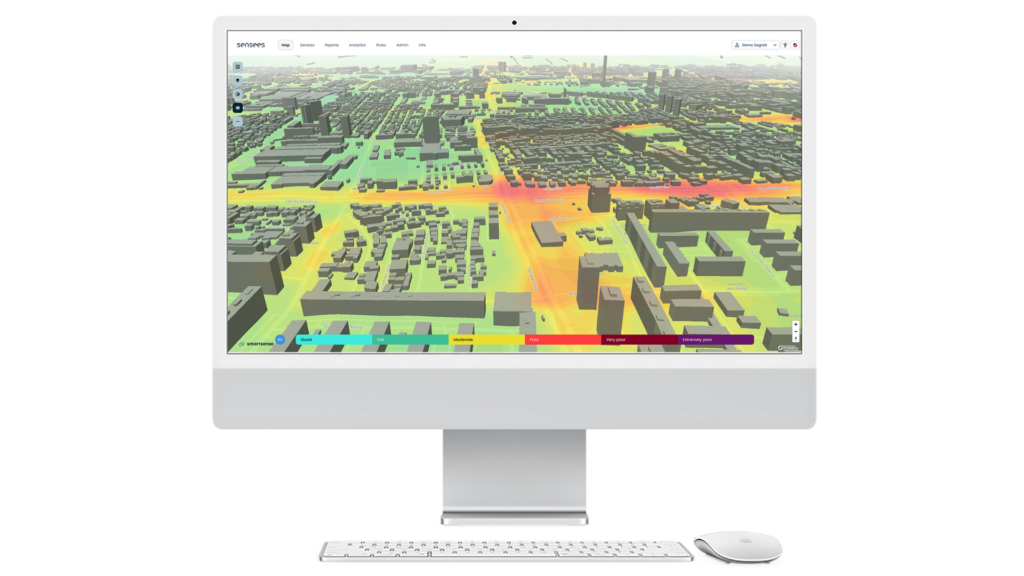
Conclusion
Through Smart Sense’s comprehensive monitoring solutions and the forward-thinking approach of the Teaching Institute of Public Health “Dr. Andrija Štampar”, Zagreb has taken a substantial step in safeguarding urban health and addressing environmental challenges. This project sets a robust example for other cities striving for a cleaner, healthier future through real-time data and informed action.
